
NMN and Ageing Research Background
Nicotinamide Mononucleotide (NMN) has emerged as a promising compound in the field of aging research, attracting significant attention from scientists and the public alike. The interest in NMN stems from its role as a precursor to Nicotinamide Adenine Dinucleotide (NAD+), a crucial coenzyme involved in various cellular processes, including energy metabolism, DNA repair, and gene expression regulation. As organisms age, NAD+ levels naturally decline, leading to a cascade of age-related cellular dysfunctions. This decline has been linked to various age-associated diseases and conditions, prompting researchers to explore interventions that can boost NAD+ levels and potentially slow down or reverse aspects of the aging process.
Exploring the link between galvanic cell reactions, nicotinamide mononucleotide (NMN), and ageing? Eureka Technical Q&A connects you with experts in electrochemistry and biochemistry who can explain the science behind redox reactions, cellular energy, and NMN’s potential role in age-related processes—making advanced topics more accessible and actionable.
The study of nicotinamide mononucleotide in the context of aging is rooted in decades of research on cellular metabolism and the molecular mechanisms of aging. Early work in the field focused on understanding the fundamental processes of cellular aging, including oxidative stress, telomere shortening, and mitochondrial dysfunction. As our understanding of these processes deepened, researchers began to identify key molecules and pathways involved in regulating lifespan and healthspan. The discovery of sirtuins, a family of proteins that play a crucial role in cellular health and longevity, marked a significant milestone in aging research. Sirtuins require NAD+ as a cofactor for their activity, establishing a direct link between NAD+ metabolism and aging processes.

The potential of nicotinamide mononucleotide as an anti-aging intervention gained prominence following groundbreaking studies in animal models, particularly in mice. These studies demonstrated that NMN supplementation could effectively raise NAD+ levels in various tissues and organs, leading to improvements in metabolic health, physical endurance, and cognitive function in aged mice. The results were particularly striking in their ability to mitigate some of the hallmarks of aging, such as DNA damage accumulation, mitochondrial dysfunction, and stem cell exhaustion. These findings sparked a wave of research aimed at understanding the mechanisms by which NMN exerts its effects and exploring its potential therapeutic applications in humans.
As research on nicotinamide mononucleotide and aging progresses, several key objectives have emerged. These include elucidating the optimal dosage and delivery methods for NMN supplementation, investigating its long-term safety and efficacy in humans, and identifying specific age-related conditions that may benefit most from NMN intervention. Additionally, researchers are exploring the potential synergistic effects of combining nicotinamide mononucleotide with other compounds or interventions known to influence aging processes, such as exercise, caloric restriction, or other NAD+ precursors. The ultimate goal of this research is to develop evidence-based strategies for extending healthspan and potentially lifespan in humans, addressing the growing global challenge of age-related diseases and disabilities.

Market Analysis for Anti-Ageing Products
The global anti-aging market has been experiencing significant growth in recent years, driven by an aging population, increasing disposable income, and a growing emphasis on personal appearance and health. The market for anti-aging products, including those containing Nicotinamide Mononucleotide (NMN), is expected to continue its upward trajectory. According to recent market research, the global anti-aging market is projected to reach $421.4 billion by 2030, growing at a CAGR of 8.1% from 2021 to 2030.
The demand for NMN-based products is particularly strong in developed countries with aging populations, such as Japan, the United States, and European nations. These regions have a higher proportion of elderly individuals who are more likely to seek out anti-aging solutions. Additionally, emerging markets in Asia-Pacific, particularly China and South Korea, are showing increased interest in anti-aging products due to rising disposable incomes and a cultural emphasis on maintaining youthful appearances.
Consumer awareness of the potential benefits of NMN in combating age-related decline is growing, fueled by scientific research and media coverage. This has led to a surge in demand for NMN supplements and skincare products containing the compound. The market is also seeing a shift towards more natural and scientifically-backed ingredients, which favors NMN as it is a naturally occurring molecule with promising research behind it.
The COVID-19 pandemic has further accelerated the growth of the anti-aging market, as consumers have become more health-conscious and interested in products that support overall well-being and longevity. This trend is expected to continue, with consumers increasingly seeking out preventative health solutions rather than reactive treatments.
However, the market for NMN-based products faces some challenges. Regulatory hurdles in different countries regarding the classification and approval of NMN as a dietary supplement or pharmaceutical ingredient can impact market growth. Additionally, the high cost of NMN production and the resulting premium pricing of NMN products may limit market penetration in price-sensitive segments.
Despite these challenges, the overall market outlook for NMN and other anti-aging products remains positive. As research continues to uncover the potential benefits of NMN in combating aging, and as production costs potentially decrease with technological advancements, the market is expected to expand further. This growth is likely to be accompanied by increased competition and innovation in product formulations and delivery methods, driving the anti-aging market to new heights in the coming years.
Current NMN Research Challenges
Current research on Nicotinamide Mononucleotide (NMN) and its potential effects on aging faces several significant challenges. One of the primary obstacles is the limited understanding of NMN’s long-term effects on human health. While animal studies have shown promising results, translating these findings to human subjects remains complex. The dosage and administration methods that prove effective in mice may not directly correlate to human physiology, necessitating extensive clinical trials to determine optimal protocols for human use. Additionally, the bioavailability of NMN in humans is a critical area of investigation, as the compound’s stability and absorption in the human body may differ from that observed in animal models. Researchers are grappling with questions about the most effective delivery methods to ensure that NMN reaches target tissues and cells efficiently.
Another significant challenge lies in the scalability and cost-effectiveness of NMN production. As research progresses and potential therapeutic applications emerge, there is a growing need for large-scale, high-quality NMN synthesis. Current production methods may not be sufficient to meet potential future demand, and developing more efficient and economical manufacturing processes is crucial for making NMN-based interventions accessible if proven effective.
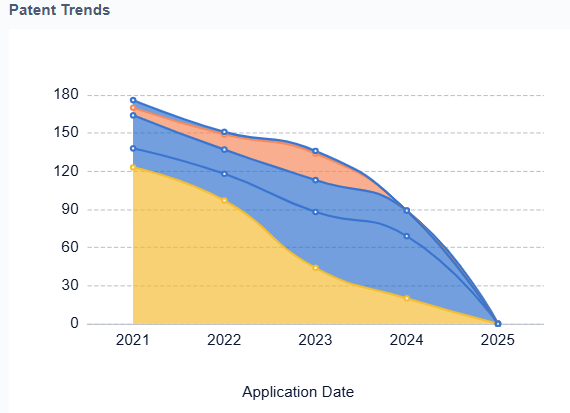
The regulatory landscape surrounding NMN also presents challenges. As a compound that straddles the line between dietary supplement and potential therapeutic agent, NMN faces complex regulatory hurdles. Researchers and companies must navigate varying regulatory frameworks across different countries, which can impact the pace of research and potential commercialization.
Furthermore, the scientific community is grappling with the need for more comprehensive, long-term studies on NMN’s effects. While short-term studies have shown promise, understanding the implications of sustained NMN supplementation over years or decades is crucial, particularly when considering its use as an anti-aging intervention. This requires significant investment in longitudinal studies, which are both time-consuming and resource-intensive.

Lastly, there is an ongoing challenge in distinguishing the effects of NMN from other NAD+ precursors and understanding its specific role in the complex network of cellular metabolism. As research continues, scientists must work to elucidate the unique contributions of NMN to cellular health and longevity, differentiating its effects from related compounds and exploring potential synergies or interactions with other interventions targeting the aging process.
NMN Discovery and Development Timeline

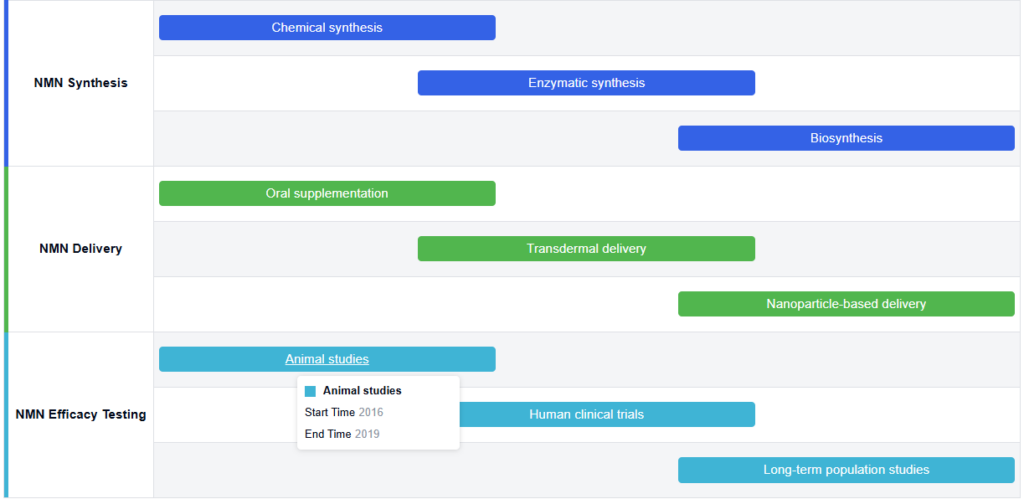
Key Players in NMN Research
The research on Nicotinamide Mononucleotide (NMN) and ageing is in a rapidly evolving phase, with significant market potential due to increasing global interest in longevity and anti-ageing solutions. The market is experiencing substantial growth, driven by scientific advancements and consumer demand. Technologically, the field is progressing from early-stage research to more advanced clinical trials, with companies like Washington University in St. Louis, Harvard College, and Elysium Health leading the way. The involvement of diverse players, including academic institutions, biotech startups, and established pharmaceutical companies, indicates a competitive and dynamic landscape. While the technology is promising, it is still in the process of maturing, with ongoing research to fully understand NMN’s efficacy and long-term effects on ageing.
 Washington University in St. Louis
Washington University in St. Louis
Technical Solution
Washington University in St. Louis has been at the forefront of Nicotinamide Mononucleotide (NMN) research, particularly through the work of Dr. Shin-ichiro Imai. Their approach focuses on investigating NMN’s role in cellular energy metabolism and its potential to mitigate age-related decline. The university’s research team has conducted extensive studies on NMN supplementation in mice, demonstrating improvements in various physiological parameters associated with aging, including metabolism, eye function, and bone density. They have also explored the molecular mechanisms by which NMN influences cellular NAD+ levels and activates sirtuin proteins, which are known to play crucial roles in longevity and health span.
Strengths: Pioneering research in NMN and aging, strong scientific credibility, and extensive animal studies.
Weaknesses: Limited human clinical trials and potential challenges in translating animal results to human applications.
Mirailab Bioscience, Inc.
Technical Solution
Mirailab Bioscience specializes in the research and development of NMN-based products for anti-aging and health promotion. Their approach involves developing high-purity NMN supplements and exploring novel delivery methods to enhance bioavailability. The company has invested in advanced manufacturing processes to ensure the quality and stability of their NMN products. Mirailab also conducts collaborative research with academic institutions to investigate the effects of NMN on various age-related conditions, including metabolic disorders and cognitive decline. Their research strategy includes both in vitro and in vivo studies to elucidate the mechanisms of NMN’s effects on cellular aging and tissue function.
Strengths: Focus on high-purity NMN production, exploration of novel delivery methods, and collaborative research efforts.
Weaknesses: Limited public information on specific research outcomes and potential challenges in differentiating their products in a competitive market.
Hokkaido University
Technical Solution
Hokkaido University has been actively involved in NMN research, particularly through the work of Dr. Yoshino and colleagues. Their approach focuses on investigating the effects of NMN supplementation on human metabolism and age-related physiological changes. The university’s research team has conducted one of the first human clinical trials on NMN, examining its safety and efficacy in healthy older adults. Their studies have explored NMN’s impact on various biomarkers of aging, including insulin sensitivity, lipid metabolism, and mitochondrial function. The research strategy at Hokkaido University also includes mechanistic studies to understand how NMN influences cellular energy metabolism and signaling pathways related to aging.
Strengths: Pioneering human clinical trials on NMN, focus on metabolic effects, and comprehensive approach to aging biomarkers.
Weaknesses: Limited long-term studies and potential need for larger-scale trials to confirm findings.
 Elysium Health, Inc.
Elysium Health, Inc.
Technical Solution
Elysium Health has developed a proprietary NMN-based supplement called Basis, which combines NMN with pterostilbene. Their approach focuses on increasing NAD+ levels in the body to combat age-related decline. The company has conducted human clinical trials to evaluate the safety and efficacy of their product. Elysium’s research strategy involves collaborations with academic institutions and focuses on the development of evidence-based nutraceuticals. They have also invested in the development of a proprietary NAD+ measurement technology to assess the impact of their supplements on cellular NAD+ levels accurately.
Strengths: Human clinical trials, proprietary formulation, and NAD+ measurement technology. Weaknesses: Limited peer-reviewed publications on their specific formulation and potential conflicts of interest in research funding.
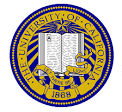 The Regents of the University of California
The Regents of the University of California
Technical Solution
The University of California system, through various campuses and research centers, has contributed significantly to NMN and aging research. Their approach encompasses a broad range of studies, from basic molecular mechanisms to potential clinical applications. Researchers at UC have investigated the role of NAD+ metabolism in aging, explored the effects of NMN on various age-related conditions, and examined potential synergies between NMN and other interventions. The UC system’s research strategy includes interdisciplinary collaborations, leveraging expertise in genetics, biochemistry, and clinical medicine to advance understanding of NMN’s potential in healthy aging. They have also explored novel delivery methods and formulations to enhance NMN’s efficacy and bioavailability.
Strengths: Comprehensive research approach, interdisciplinary collaborations, and exploration of novel applications.
Weaknesses: Potential challenges in coordinating research efforts across multiple campuses and translating basic research into clinical applications.
NMN Supplementation Approaches
NMN supplementation for anti-aging effects
Nicotinamide Mononucleotide (NMN) supplementation has shown potential in combating age-related decline. It is believed to boost NAD+ levels in the body, which play a crucial role in cellular energy production and DNA repair. Studies suggest that NMN supplementation may improve various aspects of health affected by aging, including metabolism, cardiovascular function, and cognitive performance.
- NMN formulations for anti-aging
Various formulations of Nicotinamide Mononucleotide (NMN) are developed for anti-aging effects. These include oral supplements, topical applications, and combination products with other anti-aging compounds. The formulations are designed to enhance NMN absorption and efficacy in promoting cellular health and longevity. - NMN delivery methods for improved bioavailability
Novel delivery methods are developed to improve the bioavailability of NMN in the body. These include nanoencapsulation, liposomal delivery systems, and sustained-release formulations. The enhanced delivery methods aim to increase the absorption and effectiveness of NMN for anti-aging purposes. - Combination therapies with NMN for synergistic anti-aging effects
Research focuses on combining NMN with other anti-aging compounds or therapies to achieve synergistic effects. These combinations may include antioxidants, other NAD+ precursors, or complementary lifestyle interventions to enhance the overall anti-aging impact of NMN supplementation. - Targeted NMN applications for specific age-related conditions
NMN supplementation is explored for targeted applications in specific age-related conditions. This includes formulations designed to address cognitive decline, cardiovascular health, metabolic disorders, and skin aging. The targeted approach aims to optimize NMN’s anti-aging effects for particular health concerns associated with aging.
NMN formulations and delivery methods
Various formulations and delivery methods have been developed to enhance the bioavailability and efficacy of NMN. These include oral supplements, topical applications, and novel drug delivery systems. Some formulations combine NMN with other compounds to potentially synergize its anti-aging effects. Research is ongoing to optimize NMN delivery for maximum absorption and effectiveness.
NMN in combination with other anti-aging compounds
Researchers are exploring the potential of combining NMN with other anti-aging compounds to enhance its effects. These combinations may include antioxidants, other NAD+ precursors, or compounds that target specific aging pathways. The goal is to create more comprehensive anti-aging strategies that address multiple aspects of the aging process simultaneously.Expand
NMN’s effects on specific age-related conditions
Studies are investigating the potential benefits of NMN supplementation for specific age-related conditions. These include neurodegenerative diseases, metabolic disorders, and cardiovascular issues. Preliminary research suggests that NMN may have protective effects against certain age-related pathologies, though more clinical studies are needed to confirm these findings.Expand
Safety and long-term effects of NMN supplementation
As interest in NMN as an anti-aging supplement grows, research is also focusing on its safety profile and long-term effects. Studies are being conducted to assess the optimal dosage, potential side effects, and interactions with other medications or supplements. Long-term clinical trials are underway to evaluate the sustained benefits and safety of NMN supplementation over extended periods.
Breakthrough NMN Studies

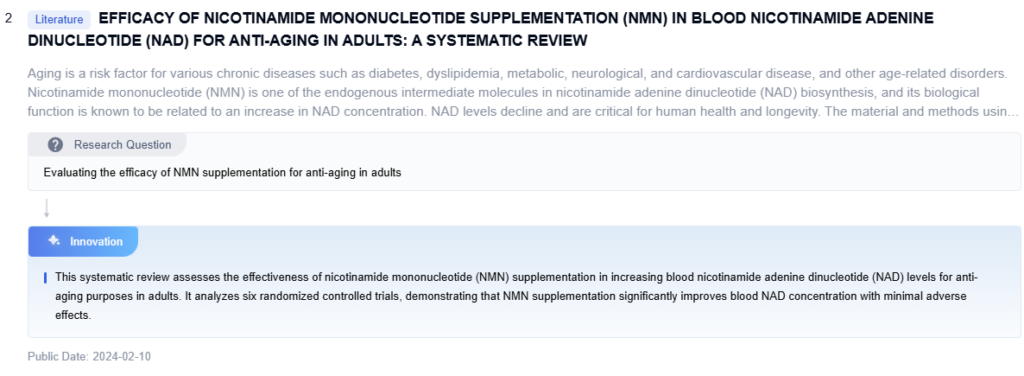

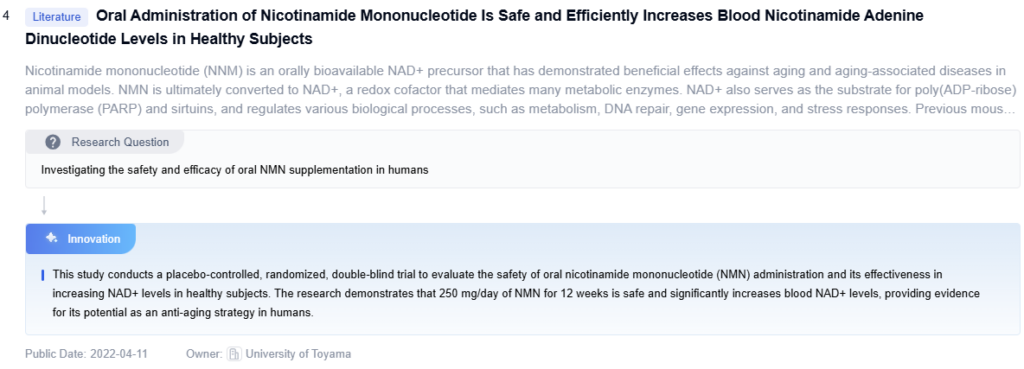
Future Directions in NMN Research
Improving NMN delivery systems is a key focus in the search for effective anti-aging therapies. Current oral supplements often suffer from poor bioavailability and limited stability. These issues reduce the overall effectiveness of NMN in supporting cellular health and longevity.
To overcome these challenges, researchers are exploring advanced delivery technologies. One promising approach involves using nanoparticle-based systems. Scientists can encapsulate NMN in biodegradable polymers or lipid-based nanoparticles. This protects NMN from degradation in the digestive tract and improves absorption into the bloodstream.
Moreover, nanoparticle carriers allow for controlled release, maintaining steady NMN levels in the body over time. This steady dosing may boost NMN’s anti-aging effects and extend its therapeutic benefits.
Another innovative strategy is transdermal delivery. Researchers are developing patches and microneedle arrays that deliver NMN through the skin. This method avoids first-pass liver metabolism and may greatly increase bioavailability. In addition, transdermal systems offer a more convenient, non-invasive solution for long-term use.
Scientists are also looking into targeted delivery systems. By attaching NMN to ligands or antibodies, they can direct it to specific tissues. This strategy may help NMN reach areas most affected by aging, such as muscles or the brain. It can also reduce side effects by limiting unnecessary exposure in other parts of the body.
Another exciting advancement is sustained-release technology. Formulations like implantable pellets or depot injections can deliver NMN over weeks or months. This long-term delivery improves patient compliance and ensures more consistent therapeutic levels.
As NMN research evolves, combining these delivery methods with better synthesis techniques will improve both performance and targeting. These innovations could revolutionize anti-aging treatments and help prevent age-related diseases more effectively.
Strengths of these enhanced delivery systems include better NMN absorption, improved convenience, and more precise targeting. They also support consistent dosing through long-lasting formulations, boosting the compound’s therapeutic impact.
However, several challenges remain. Developing these systems is complex and often expensive. Regulatory approval may be difficult, especially for novel delivery formats. Additionally, long-term use could bring unexpected side effects that require further study.
In conclusion, enhanced NMN delivery systems offer great potential. They can make NMN more effective, accessible, and targeted—paving the way for next-generation anti-aging therapies.
Regulatory Framework for NMN
The regulatory landscape for Nicotinamide Mononucleotide (NMN) remains complex and rapidly evolving. This uncertainty affects how researchers and companies develop and commercialize NMN for anti-aging applications. Currently, NMN sits between two categories: dietary supplements and potential pharmaceutical drugs.
In the United States, the Food and Drug Administration (FDA) has not defined a clear regulatory path for NMN. Some manufacturers market NMN under the Dietary Supplement Health and Education Act (DSHEA) of 1994. This act allows supplement sales without pre-market approval, as long as no direct health claims are made.
However, the FDA recently questioned whether NMN qualifies as a dietary supplement. Because NMN is under investigation as a drug, the agency raised concerns about its eligibility as a dietary ingredient. This move has created confusion and uncertainty for both producers and consumers.
Meanwhile, other countries take different approaches. In Japan and China, NMN has received more regulatory acceptance. Authorities there allow its use as a food ingredient or supplement. Several NMN products already have official approval for sale in these markets.
In contrast, the European Union enforces stricter rules. Under EU law, NMN qualifies as a novel food. Before entering the market, NMN must undergo thorough safety assessments. This includes supplying detailed data on its effects, stability, and potential health risks.
These global differences in regulation present both challenges and opportunities. Companies must adapt their strategies for each market, while researchers must stay informed about shifting rules. At the same time, growing interest in NMN’s benefits is pushing regulators to clarify their positions.
As more clinical trials and safety studies emerge, regulators will likely update their policies. Scientific progress will influence how agencies define NMN’s role in health and aging. This process may eventually lead to a dedicated regulatory framework for NMN-based interventions.
Looking ahead, the NMN regulatory future depends on strong evidence and continued innovation. Researchers and companies must balance the push for rapid progress with the need for safety and compliance. Clear regulations will help protect consumers while supporting new therapies in the anti-aging field.
Ultimately, a well-defined regulatory framework will shape NMN’s future in the global market. It will determine how easily consumers can access NMN, what claims companies can make, and how safely the product can be used.
Safety and Long-term Effects of NMN
Understanding the safety and long-term effects of Nicotinamide Mononucleotide (NMN) is essential for its use in anti-aging therapies. Early animal studies show promising results, but researchers still need to study its long-term impact on humans.
Short-term human studies report good tolerability. Most participants experience only mild and temporary side effects. However, long-term safety remains uncertain, especially across diverse populations and age groups.
One concern involves NMN’s influence on metabolism. Since NMN supports NAD+ production, prolonged use might disrupt natural metabolic balance. Some scientists worry it could affect other cellular pathways or interfere with key biological functions.
Another area of concern is cancer risk. While some studies suggest NMN may help prevent cancer, others question if it could promote tumor growth. Researchers need more data to understand how higher NAD+ levels affect aging cells and cancer development.
Additionally, NMN’s long-term effects on organs like the heart, brain, and endocrine system require more investigation. These systems could respond differently over time, especially in older adults or those with existing health conditions.
Drug interactions also raise concerns. Many older adults take multiple medications, and NMN could interact with them. Researchers must explore how NMN behaves in different physiological states and with other drugs.
Determining the right dosage and duration is another major challenge. Scientists have yet to agree on how much NMN people should take or for how long. A balanced dose must offer benefits without causing harmful side effects.
To ensure safety, researchers must conduct large, long-term clinical trials. These studies should include participants from various age groups, ethnic backgrounds, and health conditions. This diversity will provide a clearer picture of NMN’s long-term effects.
Post-market surveillance will also play a key role. If NMN becomes widely available, tracking rare or delayed side effects will be essential. This ongoing monitoring helps keep consumers safe and ensures responsible use.
As research continues, experts must weigh NMN’s potential benefits against emerging risks. Clear guidelines based on solid scientific evidence will support safe and effective use of NMN in anti-aging applications.
To get detailed scientific explanations of nicotinamide mononucleotide, try Patsnap Eureka.


